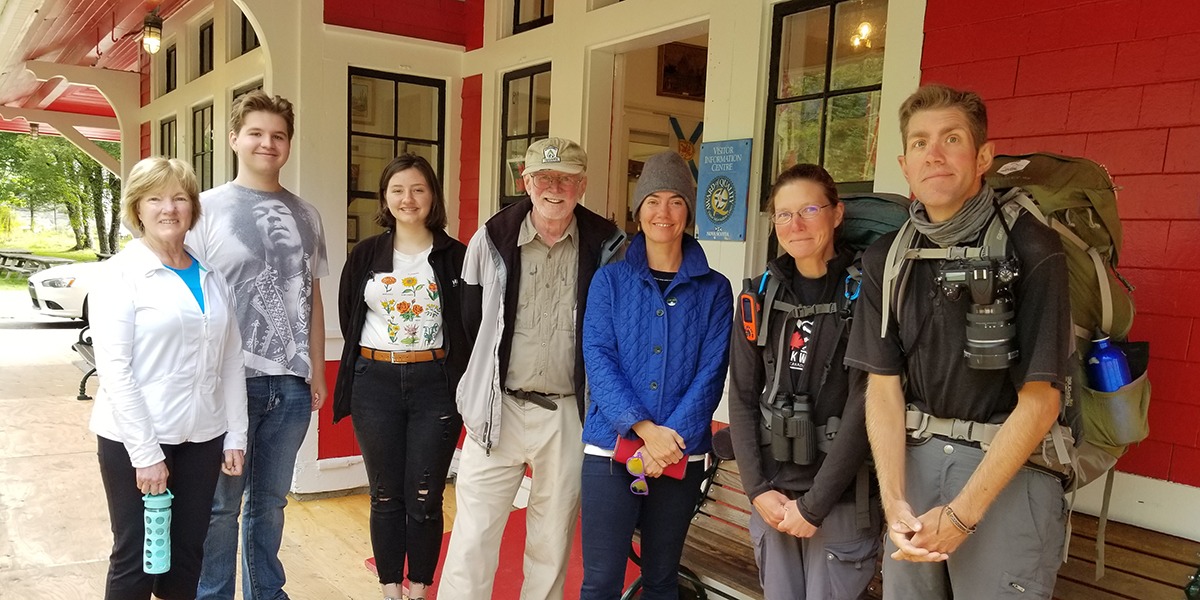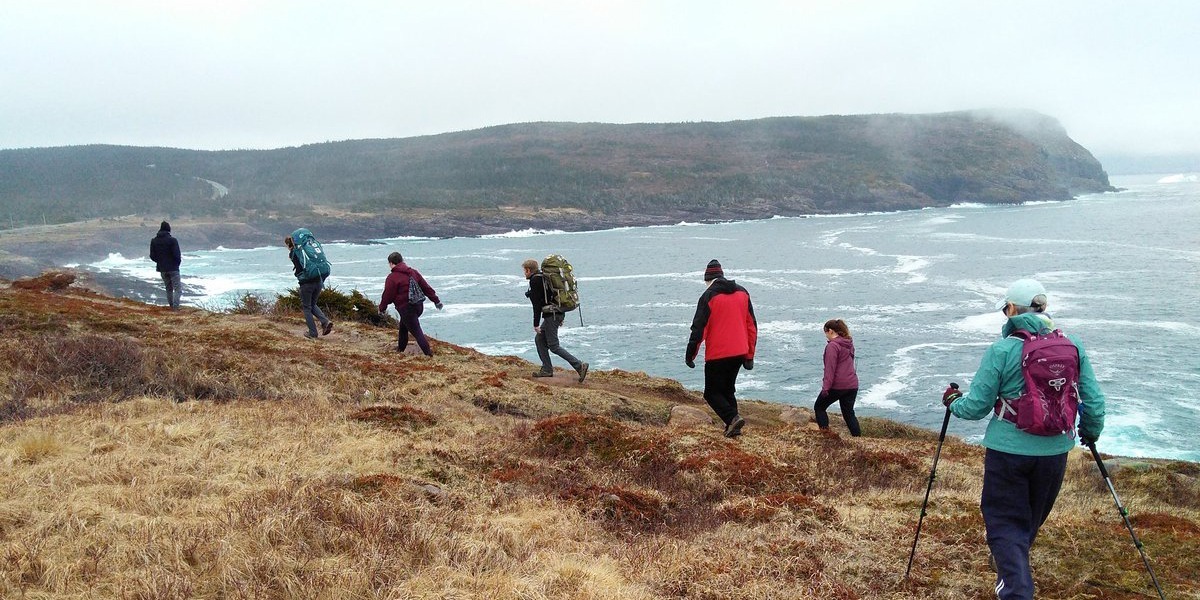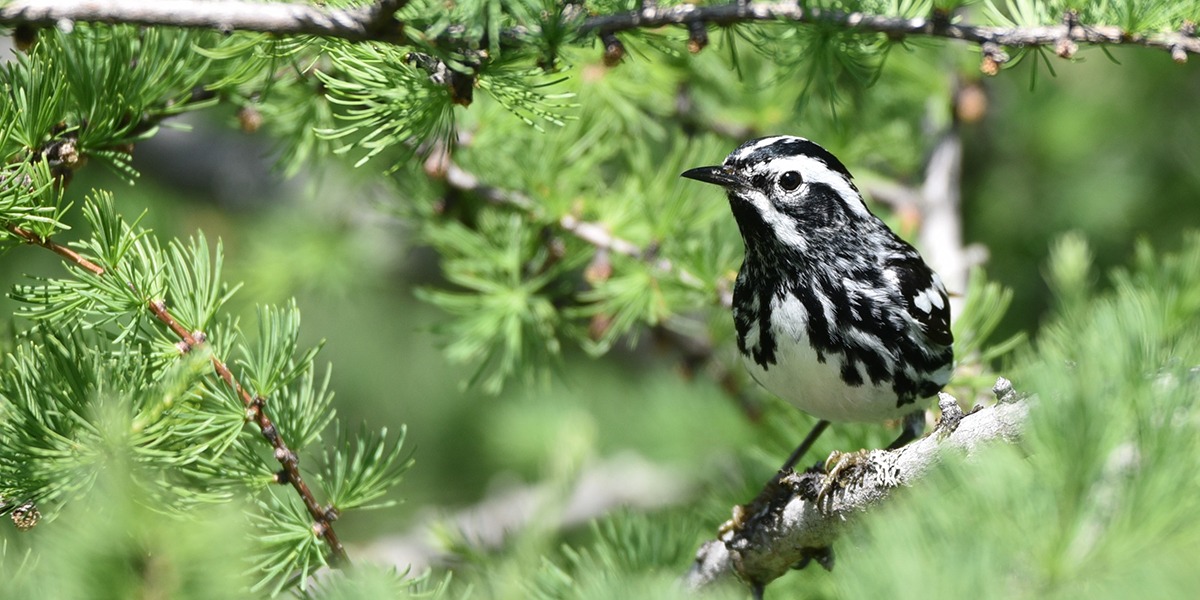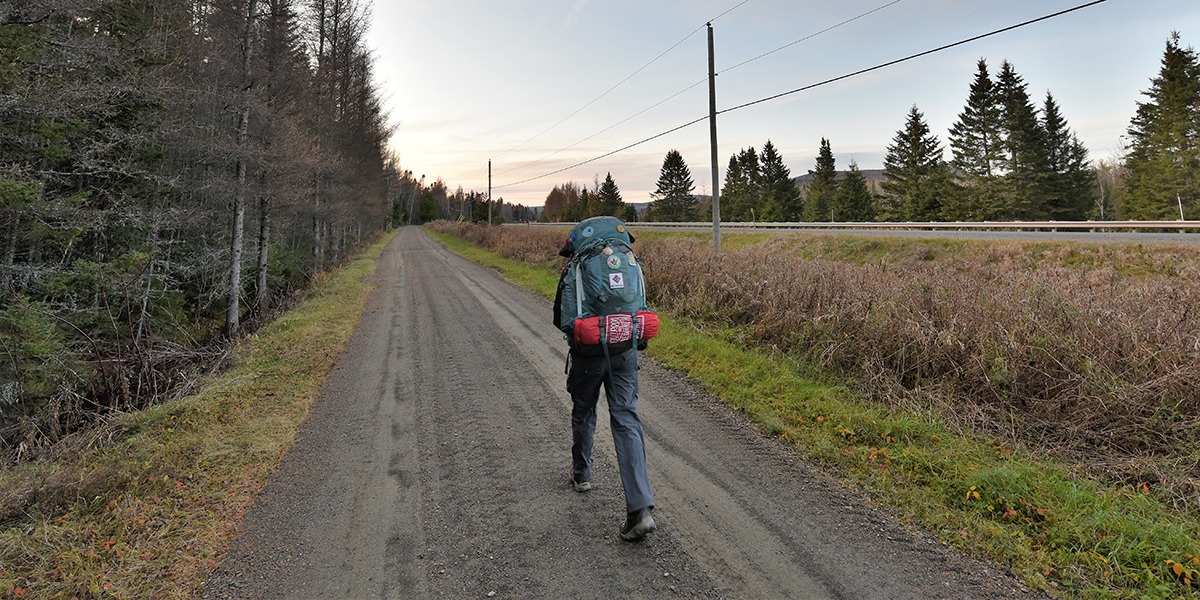By Sonya Richmond, Come Walk With Us
The arrival of spring will herald the second season of the #hike4birds across Canada I’m doing with my partner Sean Morton on the world’s longest trail – the 24,000-km Great Trail.
We are undertaking this epic journey to inspire people of all ages, backgrounds, abilities, genders, orientations, and identities to connect to nature through birding. With the support of Birds Canada, the James L. Baillie Memorial Fund, the Great Trail, and the Explorer’s Club, we are encouraging people to protect Canada’s wild birds and their habitats. We’re sharing information about birds, Important Bird and Biodiversity Areas, and simple steps that everyone can take to help birds whether in their own backyards or in the Boreal, including becoming Citizen Scientists.

Bird walk in Musquodoboit Harbour, Nova Scotia Photo: Come Walk With Us
The response so far has been very encouraging, especially from outside the scientific and birding communities. While they may not identify as naturalists and birders, most people actually do see the effects of climate change, see that there are fewer birds in their backyards, and want to know what they can do to help. The largest positive response has come from sharing Birds Canada’s 6 simple steps to help birds. People really grab onto these easy means to help birds and the environment as well as loving the notion that they can enact change from their backyards to the Boreal.
The first stage of our journey across Canada began in Cape Spear, NL on 1 June 2019 and took us to Rivière-du-Loup, QC by 11 November 2019. If you missed our coverage of that leg, you can click here to learn more.

Bird walk with Nature NL Photo: Come Walk With Us
During April and May of 2020, we will “warm up” for this year’s hike by traversing southwestern Ontario during the spring migration season, following the Great Trail from Brantford to Windsor. Along the way, we will explore many of the province’s essential birding hotspots, including the Long Point World Biosphere Reserve, Aylmer Wildlife Management Area, Rondeau Provincial Park, St. Clair National Wildlife Area, Hillman Marsh, Point Pelee National Park, the Jack Miner Bird Sanctuary, and the Ojibway Prairie Complex.
Then we will continue our #hike4birds westward across Canada, resuming in Rivière-du-Loup and trekking through Québec, Ontario, and into Manitoba.
While we walk from coast to coast to coast through Canada’s communities, we will share stories of our time on The Great Trail, show how easy it is to make birds and nature a regular part of our lives, and introduce people to Citizen Science and local naturalist initiatives. We are inviting everyone to “Come Walk With Us” by following our journey online. To stay connected with us, please follow our social media accounts listed at the bottom of this page.

Black-and-white Warbler Photo: Come Walk With Us
In 2020, we are excited to return to the Boreal Region of Canada, where we are going to spark conversations with people about how the species in their own backyards depend upon this essential ecosystem. We also hope to inspire the people we visit south of the Boreal Region to make their own backyards more bird-friendly to help these migratory marvels. More than 300 bird species rely on the Boreal Region as their “nursery” for breeding and raising their young. The region is essential to the estimated 3 to 5 billion birds which are born there each year. As such, the Boreal and the migrating birds that rely upon it are important indicators of environmental health. At present, climate change, industrial development, and a general lack of awareness regarding the Boreal are just some of the major factors that threaten its conservation.
To learn more and follow along with our hike or sponsorship opportunities be sure to check:
Website: comewalkwithus.online
Email: comewalkwithus@hotmail.com
Twitter: @TransCanadaWalk
Instagram: @ComeWalkWithUsOnTheGreatTrail
Facebook: fb.com/WalkWithUsAcrossCanada

Photo: Come Walk With Us
